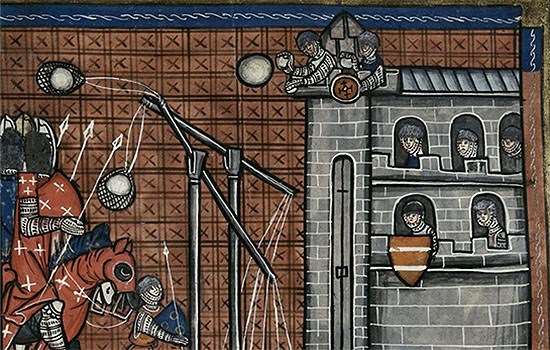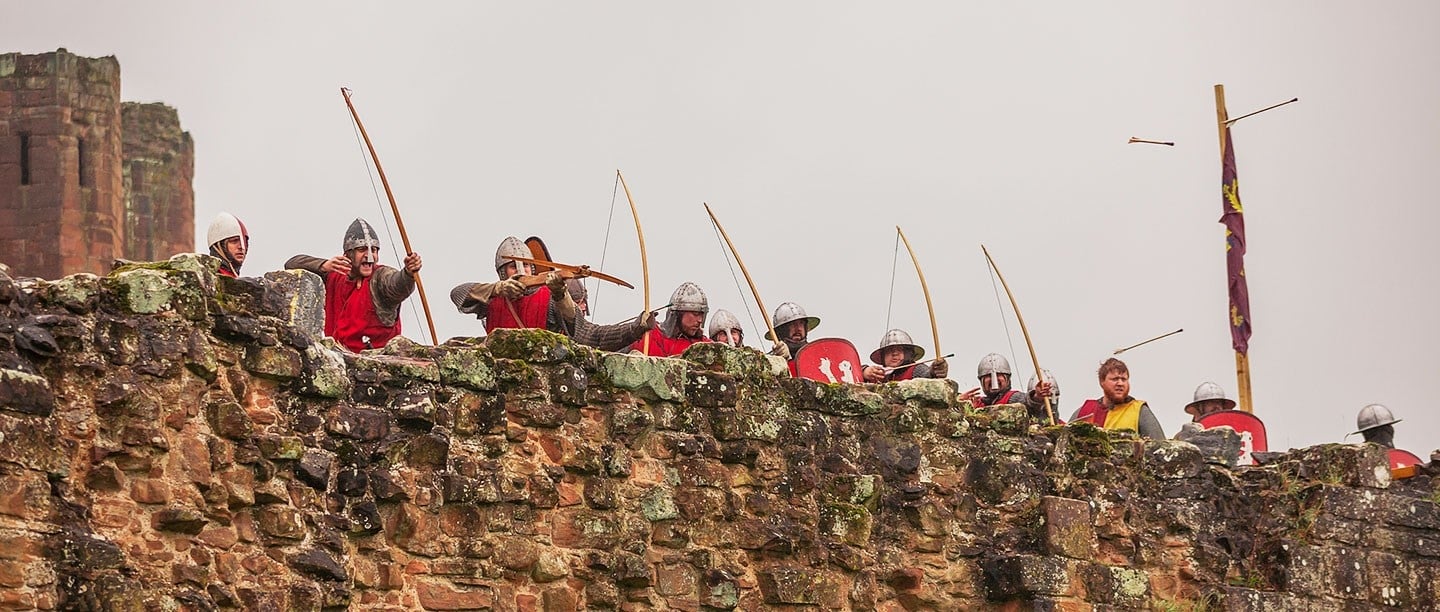1. Hot Oil was rarely thrown at attackers
The idea of buckets of hot oil being dropped on attackers is common in TV and film, but hot oil was rarely used as a weapon.
Those defending the castle would sometimes pour hot sand, boiling water or quicklime on attackers who were using scaling ladders to climb the walls. However, it was more common to pour water to put out fires than dump unpleasant objects on attackers.
2. Attackers Dug beneath the walls
Digging under the walls could be more effective than trying to go over or through them.
During the Great Siege of Dover in 1216, Prince Louis of France's miners burrowed tunnels through the chalk beneath the castle walls to undermine them. This led to the eastern tower of the gatehouse collapsing.
While the defenders managed to push Louis and his men back by brutal hand-to-hand combat, and Prince Louis eventually abandoned the siege, the undermining exposed a weakness in Dover Castle's defences.
3. Hunger was used as a weapon...
If a castle had good defences, attackers often decided to wait and try to starve the defenders out. It was not uncommon for those inside the castle to resort to eating their horses, or even their dogs and cats, as supplies ran low. The starving defenders were sometimes forced out of the castle, abandoning it to the besiegers.
Hunger was a key factor in the surrender of garrisons at castles across England, including sites such as Kenilworth Castle, Goodrich Castle, and Pendennis Castle.
4. ...But attacking armies also forced problems
Maintaining an army large enough to lay siege to a major castle – and keeping them fed and armed – was a hugely expensive challenge.
Royal armies often gave farmers no choice but to sell their goods to the army at low prices. During the siege of Kenilworth Castle in 1266 at least 20 counties had to supply food to King Henry III’s army. The Sheriff of London even sent a whale to help feed the army.
5. Crenellated Defences Offered Protection to Bowmen
The iconic crenellated shape of a castle wall doesn't just look pretty - it also serves an important purpose.
This arrangement allowed soldiers to shoot arrows and crossbow-bolts at the enemy, with a clear line of vision through the gaps. Hinged wooden shutters between the stone 'crenels' would then drop shut to protect them while they reloaded their weapons. These wooden shutters have not survived in most castles, but the stonework has, which is why we now so often see this shape at castles across the country.
6. The Longest Siege
The longest siege in medieval England was the siege of Kenilworth Castle in 1266. A group of around 1,200 rebels, who wanted to curb Henry III's power, built up supplies and arms at Kenilworth Castle, which had very strong defences.
The siege began on 25 June and lasted 172 days - that's almost 6 months. By the time the castle troops surrendered they only had enough food for two more days.
7. Both sides used fearsome weapons
In medieval times, giant 'siege engines' like trebuchets, perriers and mangonels were used to fire huge stone balls at the enemy.
However, castle walls were designed to withstand these attacks. Though the constant barrage of missiles could sometimes destroy buildings, they mainly took a psychological toll on the defenders inside the castle. Some castles like Kenilworth and Pevensey also had their own siege engines to hurl missiles back at attackers.
8. Attackers built wooden siege towers
Wooden siege towers were tall constructions that could fit many men inside. They could provide crossbowmen and archers with a higher (and therefore better) position to shoot from, or could be wheeled up against castle walls to allow attacking soldiers to climb onto the battlements and storm the fortress.
However, as they were made of wood they were susceptible to fire, and defenders would try their best to set fire to the towers before they could be put to use.
9. They Didn't always fight to the death
Those inside the castle were generally offered good terms of surrender. Sieges were expensive to maintain, and attacking armies were often keen to avoid drawn-out hostilities if possible.
However, even within the same conflict, different castles were offered very different terms of surrender. During the English Civil War, the Royalist garrison at Pendennis Castle surrendered to the Parliamentarian forces. They marched out with full honours of war, and remained free men. These generous terms are a sharp contract to Goodrich Castle, where the Royalists became prisoners and had to forfeit their arms and property.
10. The Most Besieged Place in England
For over 500 years Carlisle was the main point of defence against the Scots on England's north-west border.
Because of this, Carlisle has been besieged ten times – more than any other place in the British Isles.
See more
-

Join us as a member this summer
Our Members get unlimted access to over 400 historic places as well as free entry for up to 6 children aged under 19 years from within your family group.
-

Find out about Henry III’s assault on Kenilworth Castle in 1266, which turned into one of the longest sieges in English medieval history.
-

Castle Sieges
Experience the drama of a siege for yourself with one of our siege events across England this summer.
